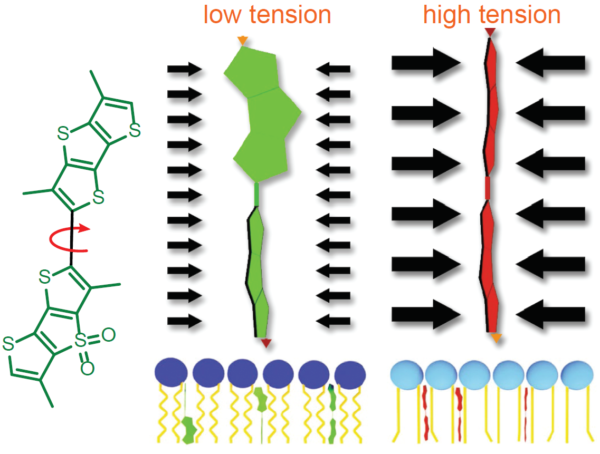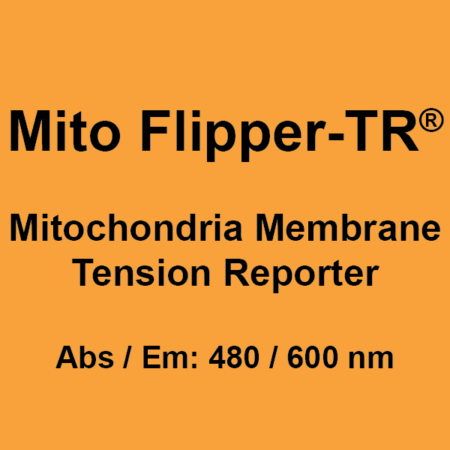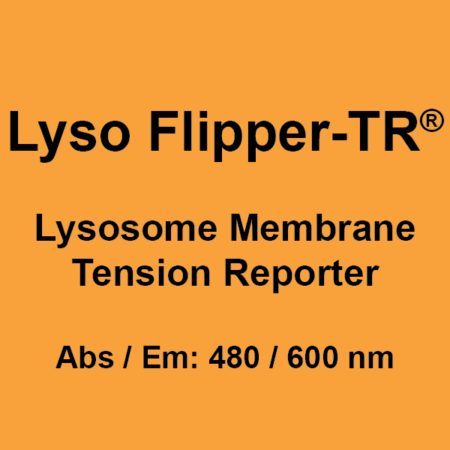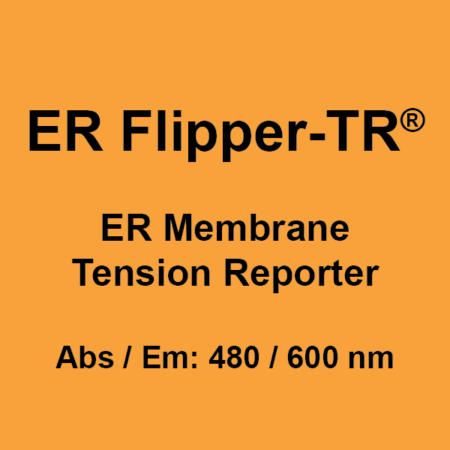Product Description
Halo-Flipper is a fluorescent probe that specifically labels Halo-tag™* and reports membrane tension changes through its fluorescence lifetime changes. It contains a ChloroAlkane Halo-tag™* ligand as well as a tethered Flipper-TR fluorophore which senses changes of the organization of lipid bilayer membranes surrounding the Halo-tag™* protein. Halo-Flipper is cell permeable, spontaneously labels Halotag expressing cells and is only fluorescent when inserted in a lipid membrane. It has a broad absorption and emission spectrum, excitation can be commonly performed with a 488nm laser, while emission is collected between 575 and 625nm. It is the perfect tool to precisely localize the Flipper-TR membrane tension fluorophore within cells.
ChloroAlkane (CA) is the substrate of the self labeling tag Halo-tag™*. Upon reaction with a CA derivative, Halo-tag™* forms a covalent bond with the substrate. It allows to permanently attach a fluorescent label to any protein of interest (POI) expressed as Halo-tag™* fusion.
A detailed protocol for staining and FLIM imaging can be found in the datasheet. Probe quantity allows 100 staining experiments.**
Photophysical properties
λabs 480 nm
λfl 600 nm
εmax 1.66·104 mol-1·cm-1 (in DMSO)
lifetime 2.8-7 ns
QY 30% (in AcOEt)
Downloads:
Flipper-TR® fluorophore Abs/Em spectra (Excel format)
References:
1) Colom A, et al.: A fluorescent membrane tension probe, Nat Chem, 2018, 10:1118–1125 ().
2) Straková K., et al.: HaloFlippers: A General Tool for the Fluorescence Imaging of Precisely Localized Membrane Tension Changes in Living Cells, ACS Cent. Sci. 2020, 6, 8, 1376–1385
*Halo-tag™ is a registered trademark of Promega Corporation.
**Based on the following conditions: 0.5 – 1 ml staining solution / staining experiments with 200 nM probe concentration. The number of staining experiments can be further increased by reducing volume or probe concentration.
Halo-Flipper probe is distributed by Spirochrome under an exclusive license from the University of Geneva, Switzerland and was developed by the NCCR Chemical Biology.











